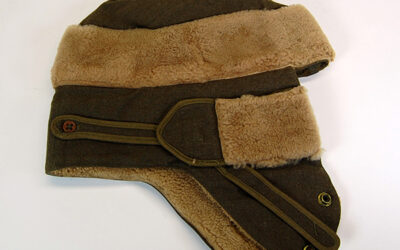
By David L. Bristow, Editor
Was Gen. John J. Pershing a ruthless martinet or a man whose dignified military bearing inspired respect and even adoration? Opinions varied.
Historian Geoffrey Perret writes that Pershing had been an avid practitioner of hazing as a West Point upperclassman before his graduation in 1886. Serving on the West Point staff a decade later, Pershing’s cadets secretly called him “Lord God Almighty” and hated him for methods that “amounted to a caricature of leadership and a living definition of the martinet.”
Long before he commanded the American Expeditionary Forces in World War I, Pershing served as military instructor at the University of Nebraska from 1891 to 1895. There he transformed the university’s cadet battalion from a lackadaisical program into a highly disciplined unit. In a 1962 article for Nebraska History, Donald Smythe, S.J., quotes several former cadets saying how much they had admired Pershing and tried to emulate him. Fr. Smythe includes an anecdote of Pershing’s Nebraska days, which first appeared in the March 1919 edition of The World’s Work, a popular magazine:
One day, for example, the cadets were at target practice, shooting at a masked battery in an orchard. They were firing by volleys. The commands in those days were: Load! Ready! Aim! Fire!
Pershing, standing behind the cadets, barked out the first three commands: “Load!” “Ready!” “Aim!” Then, touching a cadet lightly with his foot, he whispered so that only he could hear: “Fire your piece.”
“Rrr-ip,” went the cadet’s old 45-70 Springfield. “RRR-IP,” went all the other cadets’ rifles up and down the whole length of the firing line.
Then the fun began. Pershing stormed up to a cadet, jabbed his jaw into the latter’s face, and inquired with exquisite sarcasm:
“Did you hear the command ‘Fire!’?”
“No, sir.”
“Then why did you fire?”
“I heard some one else fire, sir.”
“Do you always do what you hear other people do?”
A pause. A gulp. Consternation. “No, sir.”
The point was made. Thereafter, no University of Nebraska cadet fired his piece without first hearing, clearly and distinctly, the command, “Fire!”
It’s an innocent enough story, but its publication soon after the end of World War I seems calculated to reinforce Pershing’s public image as a hard-nosed but effective commander—an image that Pershing’s supporters hoped would carry him to the presidency in 1920.
Photo: Pershing (front, center) with his University of Nebraska cadets, circa 1895. History Nebraska RG2378-18-3
(Posted 3/9/2023. An earlier version of this article appeared in the Summer 2021 issue of Nebraska History Magazine.)
Sources:
“General John J. Pershing,” American Experience (PBS)
https://www.pbs.org/wgbh/americanexperience/features/macarthur-general-john-j-pershing/ (source of Perret quote).
For further reading:



